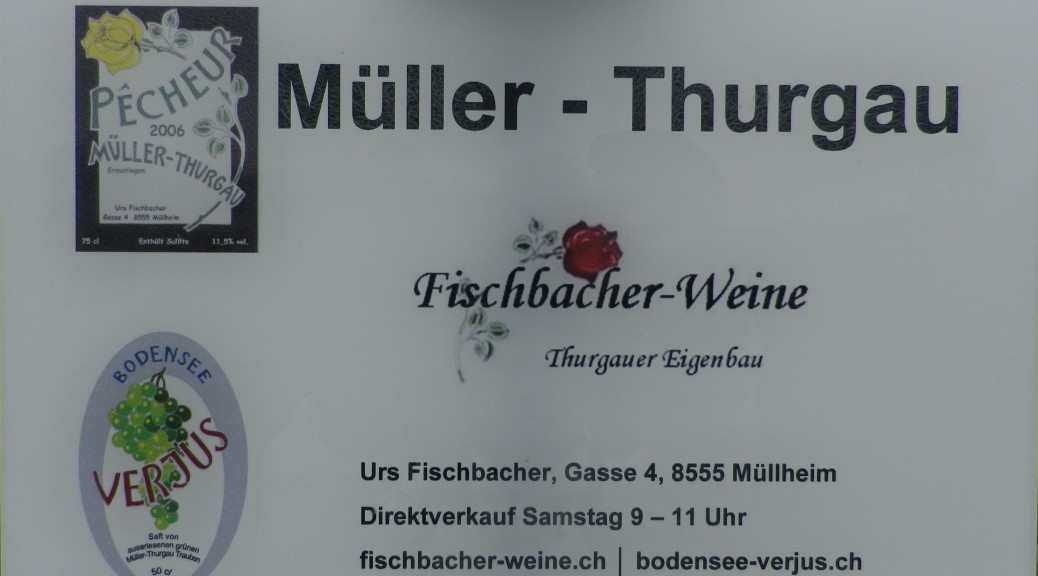What I Learned
The northeast corner of Switzerland, where Germany, Austria and Switzerland group together around Lake Constance and the Lower Lake(the Bodensee and the Untersee, in German), is marketed as Mediterranean-like. While the area does boast some of the warmer and sunnier days in this part of the German-speaking world, due in part to the lake and the Rhine River which flows through it, the reality is that it is often cloudy, if not rainy, with windy and cool conditions. Hence vintners here face challenges growing grapes.
In 1882, Hermann Mueller, a local man, came to the rescue. Born in the village of Taegerwilen, within sight of Germany’s city of Constance and its Swiss conjoined city Kreuzlingen, he grew up in this area. His father was a part-time vintner, and his mother from the great wine region of the German Rheingau (further up the Rhine). Oenology was in his blood. After completing high school in Constance, and teaching for a stint in nearby Stein am Rhein, he entered the University of Wuerzburg where he graduated with a Ph.D. in botany. He worked in the Rheingau at the Prussian Institute for Horticulture and Viticulture, but the issues faced by Thurgau grape producers were not far from his mind.
Their challenge was to have vines that were hardy enough to withstand cold winters, with buds’ resistant enough to spring frosts, and early ripening grapes. After experimentation, Dr. Mueller produced the grape now named after him and his home canton: The Mueller-Thurgau. (He subsequently called himself after the grape, appending the canton name to his surname.)
The grape spread throughout many northern, cooler grape-growing regions, and at one point was the most widely planted varietal in Germany. While often known as Mueller-Thurgau, in Luxembourg (along the Moselle) and Austria it became known as the Rivaner, because it was believed to be a cross between the Riesling and Silvaner varietals. DNA testing however, shows that it is a cross between a Riesling and a Madeleine Royale.
Overall, the grape was moderately successful in combatting the climatic challenges it was designed to face. It was more successful at producing high yields, which didn’t necessarily help its reputation for wine. Nowadays though, with yields decreasing overall, and focus on quality increasing, some Mueller-Thurgau wines can be quite interesting.
What I Tasted
2014 Mueller-Thurgau, Kanonenputzer, M & M Stadler: A semi-dry white wine with very pale gold color; a slight grape nose, and fruity and floral flavors; medium acidity.
2012 Mueller-Thurgau, Truebeltinger, Ammann: A dry white wine with pale gold color; grape nose, fruity and floral flavors; mild acidity.
